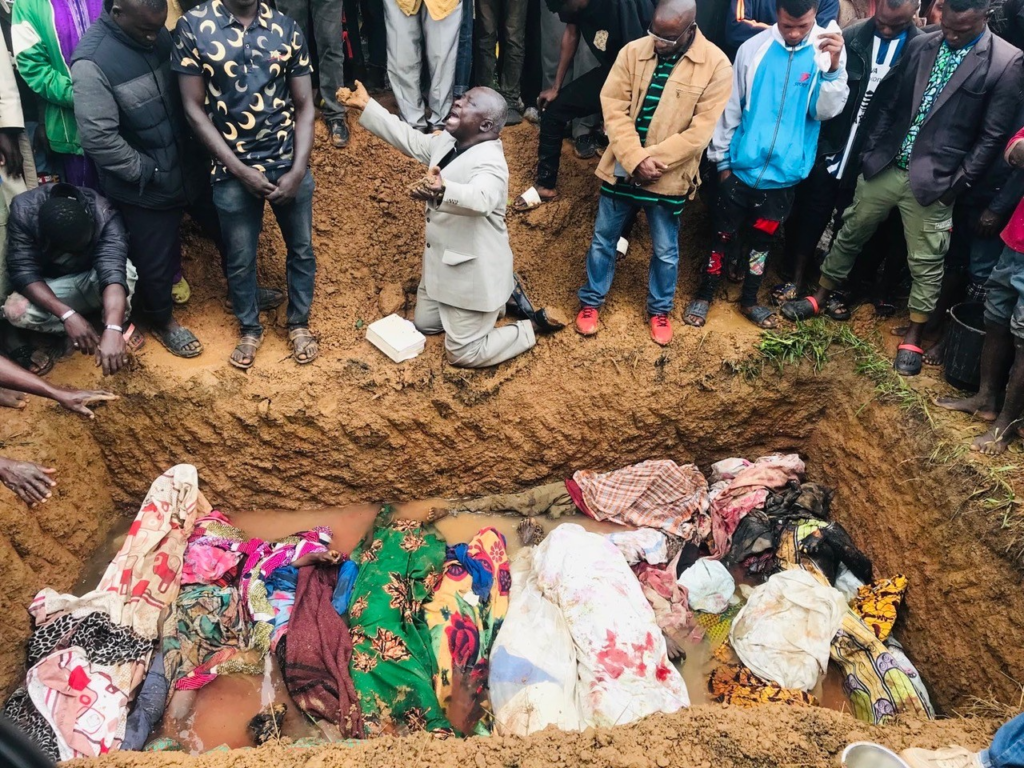


Mass killings, abductions and torture of whole families go largely unchallenged as military pursue targets hundreds of miles away, finds four-year data project
Islamist extremists enjoy relative freedom to carry out atrocities against civilians in large regions of Nigeria, according to data scientists behind a four-year study.
Researchers at the Observatory of Religious Freedom in Africa recorded over 55,000 killings and mapped thousands of farm massacres and mass abductions in a four-year period, including in Nigeria’s fragile North Central Zone and Southern Kaduna.
A little-known terror group, the Fulani Ethnic Militia or FEM, commit mass killings hundreds of times a year through this region.
Across the country, over 11,000 incidents[1] of extreme violence took place during the data period, with more than 55,000 killings and 21,000 abductions.
In the North Central zone alone, 3,007 incidents of extreme violence occurred. 2,010 incidents involved killings, 700 were abduction incidents, and 297 were a combination of killings and abductions.
Now data mapping has revealed security operations are concentrated in the North-East and North-West of Nigeria, hundreds of miles from the scenes of FEM atrocities.


The map on the top (Fig.1) shows all killings in recorded violence incidents.
The map on the bottom (Fig.2) shows incidents in which mostly militants were killed as government forces engaged Islamists.
Across the North-Central zone and Southern Kaduna – where hundreds of FEM atrocities occur – there is markedly little security engagement at the scene of attacks.
‘Millions of people are left undefended,’ notes Frans Vierhout, Senior Analyst at The Observatory of Religious Freedom in Africa. ‘For years, we’ve heard of calls for help being ignored, as terrorists attack vulnerable communities. Now the data tells its own story.’
Key Findings: the full report can be accessed here.
- 55,910 people were killed in the context of terror groups in Nigeria within four years
- Only a fraction of civilians were killed by ISIS or al-Qaeda affiliates. The little-known Fulani Ethnic Militia (FEM) killed at least 42% of all civilians, while Boko Haram and ISWAP (‘Islamic State West Africa Province) combined killed 10%
- The Fulani Ethnic Militia (FEM), an ethno-religious terror group, are considered by many security experts to be a ‘twin’ of Islamists killing and kidnapping civilians in Northern Nigeria
- Land-based community attacks form the largest category of civilian killings (81%). FEM invade small Christian farming settlements to kill, rape, abduct and burn homes
- 2.7 Christians were killed for every Muslim in the reporting period
- Islamist extremists kill both Muslims and Christians, although Christian death tolls are far higher
- Proportional loss: in states where attacks occur, proportional loss to Christian communities is exceptionally high. In terms of state populations, 6.5 times as many Christians are being murdered as Muslims
Abduction: hallmark of Islamist terror
The ORFA data project also reveals the widening reach of Islamist kidnapping in Nigeria, with incidents escalating through the four years: 2020 (1,665 people abducted) 2021 (5,907 people abducted) 2022 (7,705 people abducted) and 2023 (6,255 people abducted).
Christians are 1.4 times more likely to be abducted than Muslims. In terms of state populations, proportional loss of Christians is higher: around 5.1 Christians are abducted for every Muslim in terms of local populations.
‘Fulani Ethnic Militia (FEM) are targeting Christian populations, while Muslims also suffer severely at their hands,’ notes Rev. Dr. Gideon Para-Mallam, partner to ORFA and analyst.
‘Kidnappers work to Islamist goals. Where young women are kidnapped, tortured and sexually violated, hope for normal married life, and family, may vanish.’
At the end of 2023, the IDMC[2] reported 3.3 million Nigerians were forcibly displaced from their homes and surviving in makeshift camps.
The authors of the ORFA data project urged the international community to examine the data and to do more to fully understand the scale of the challenge to Nigeria.
——–ENDS——–
For more information, or to arrange an interview, contact Caroline Duffield, Media and PR for ORFA, The Observatory of Religious Freedom in Africa, mob. (+44) 07311 988338
PDF copies of the ORFA Four Year Study can be accessed here.
ORFA data analysts and in-country partners are available for briefings and interviews.
Photos:
IDPs Mangu Attack, Plateau State – May 2023
Funeral caskets, Malagun attack, Southern Kaduna, Sep 2021
IDPs Riyom, Plateau State, May 2023
ORFA 4-Year Study 2024: how figures are compiled.
The Observatory of Religious Freedom in Africa (ORFA) monitors data through 5 data streams.
These are: our primary partner research base, staffed by full-time researchers; other local country partners; our external partners, including independent academic data gathering projects; local media and local NGO reports; and social media, in specific cases where data can be validated by our primary partner. Once validated, 60 data elements are checked and logged for each violence incident. Read more about the methodology and data sources by clicking this link: ORFA methodology
The ORFA Four Year Study period covers 1st October 2019 – 30th September 2023.
ORFA, The Observatory of Religious Freedom in Africa, monitors the state of religious freedom, documents rights violations, and informs decision-makers through advocacy. The Observatory of Religious Freedom in Africa is a program of the Foundation Platform for Social Transformation, a registered charity in Voorburg, The Netherlands, under Chamber of Commerce #50264249.
[1] see Appendix 9E and 10E in main report
[2] IDMC: International Displacement Monitoring Centre, data unit established as part of the Norwegian Refugee Council



